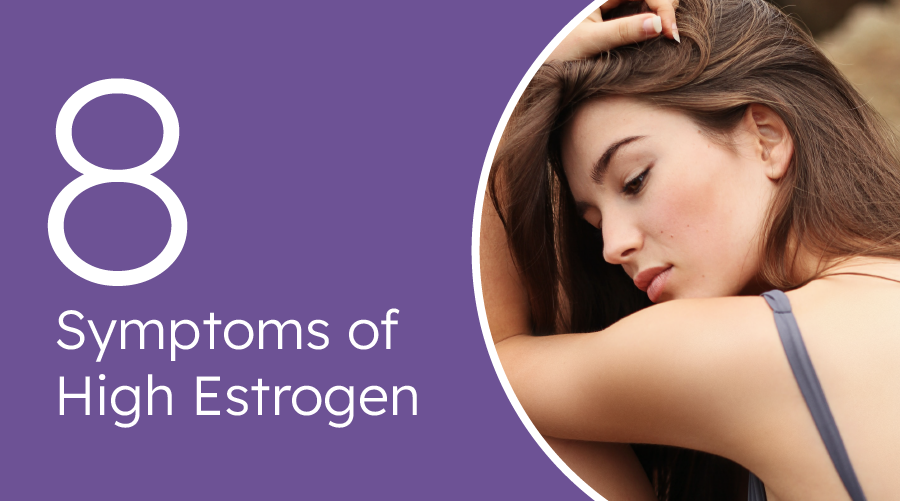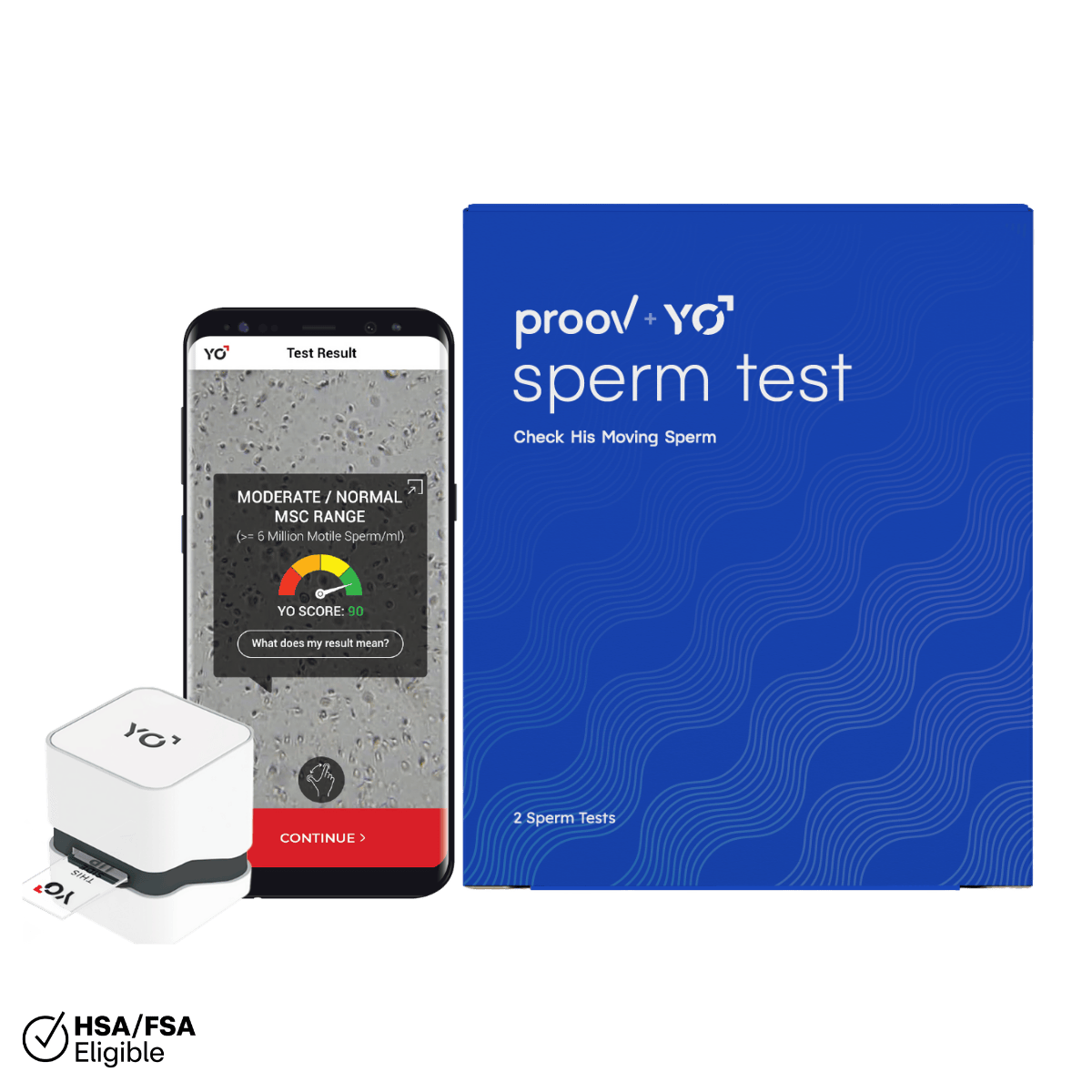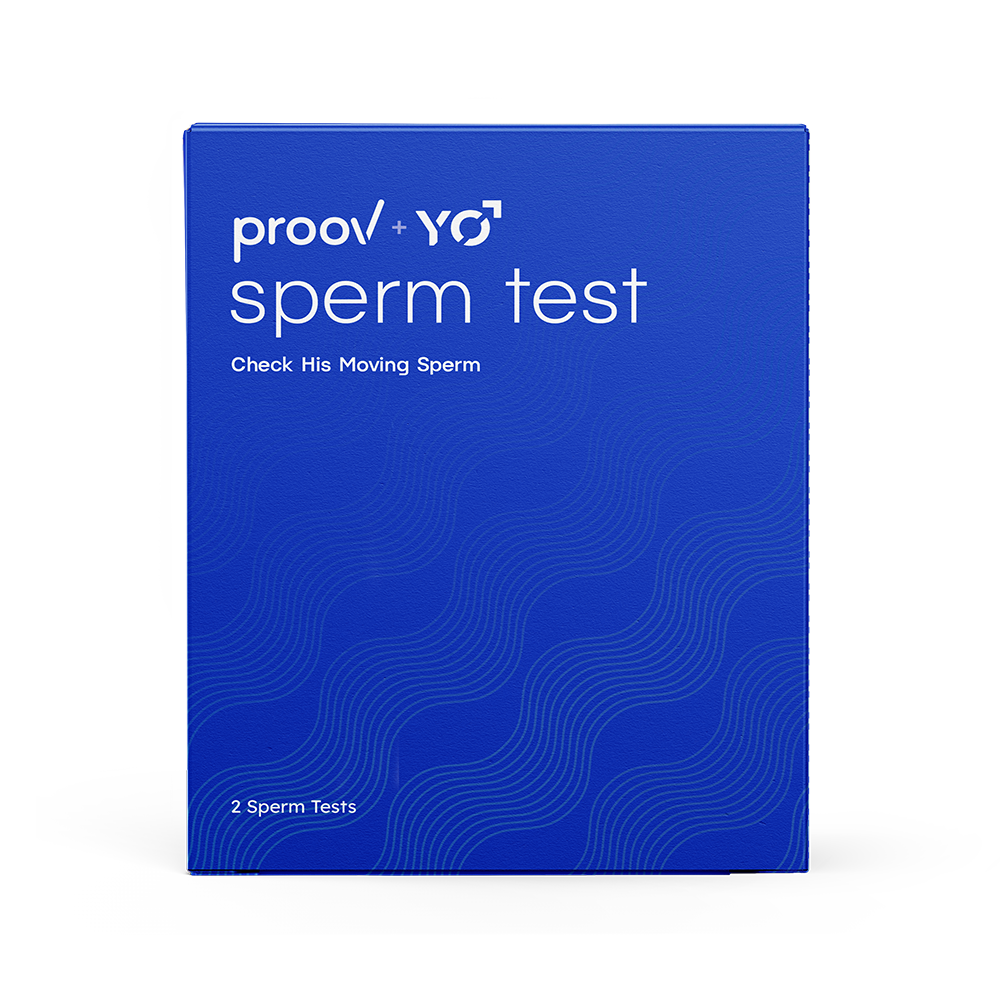Hormone imbalances can cause symptoms like mood changes, trouble sleeping, breast tenderness, heavy periods, and more. Understanding the symptoms of high estrogen can help you identify and treat potential imbalances early!
What is high estrogen and what causes it?
High estrogen occurs when estrogen levels are high in comparison to progesterone levels, when they shouldn’t be.
During women’s menstrual cycles, estrogen should exceed progesterone during the first half of your cycle (the follicular phase). In a healthy cycle, progesterone and estrogen switch places after ovulation. Progesterone exceeds estrogen in the later half of the cycle, a.k.a. the luteal phase.
Ovulation marks the point in which estrogen levels should start to drop off, letting progesterone take center stage. No ovulation, no progesterone. Suboptimal ovulation, suboptimal progesterone.
No or low progesterone means estrogen levels easily dominate. Are you seeing how understanding ovulation is key to understanding suspected high estrogen levels? Do you ovulate regularly is this first question to answer.
Lots of scenarios can cause estrogen that’s higher than progesterone when it shouldn’t be.

Are symptoms of high estrogen the same for men & women?
No, high estrogen symptoms are not the same for men and women.
In men, high estrogen can show up as poor sperm quality, breast enlargement, and erectile dysfunction.
In women, the main symptoms can include: premenstrual moodiness, breast tenderness, heavy menstruation, and fibroids or polyps.
8 Signs & Symptoms of High Estrogen Levels
It’s important to note that high estrogen can manifest itself differently in different women. If you have any concerns, it’s always best to consult your doctor.
That said, common symptoms that might be due to high estrogen include:
-
Mood Swings
If your high estrogen is caused in part by low progesterone, you may experience mood swings during your cycle. Studies show that a sharp decrease in progesterone can lead to premenstrual symptoms such as mood changes or postpartum depression. If you start experiencing mood swings, this could be a sign of estrogen being higher than progesterone when it shouldn’t be.
-
Decreased Libido
Libido is also known as our sex drive. While high estrogen doesn’t directly cause decreased libido, some sources show that imbalances between estrogen and progesterone can impact our libido.
Additionally, some women report their libido is lower when they’re also experiencing other high estrogen symptoms and not feeling their best. It’s difficult to get in the mood!
-
Weight Gain
High estrogen and weight gain go hand in hand and, unfortunately, have a somewhat cyclical relationship. High levels of estrogen can cause weight gain, particularly around the breasts, belly, hips, and thighs – feminine curves, if you will.
Fat cells also produce estrogen, albeit a different form of estrogen than what our ovaries make. Estrogen from fat cells can exacerbate high blood levels of estrogen.
-
Breast Changes, including Fibrocystic Lumps
Estrogen plays a role in breast tissue development. Increased estrogen levels manifest as breast swelling or tenderness.
Additionally, you may experience fibrocystic breast lumps, which are noncancerous. While these lumps aren’t necessarily dangerous, often they can be uncomfortable. Fibrocystic lumps can also make detection of breast cancer more difficult.
-
Heavy Periods
Estrogen and progesterone are the main hormones that help regulate your cycle. Estrogen is responsible for thickening your uterine lining during the first half of your cycle to make a comfortable place for a new life to implant after conception.
Higher estrogen levels can make your uterine lining thicker. If pregnancy doesn’t occur, your lining will shed and a thicker lining will mean a heavier period.
-
Severe Premenstrual Symptoms
Premenstrual symptoms such as mood changes, menstrual cramps, and spotting could be low progesterone in disguise. Low progesterone will make it easy for estrogen to dominate.
-
Hair Loss
Hair loss is another common high estrogen symptom. A recent study found that a gene variant that causes higher levels of estrogen may be associated with female pattern hair loss.
Not surprisingly, the imbalance between estrogen and progesterone that occurs during estrogen dominance may play a role in hair loss as well. Progesterone acts as a natural counterbalance to the hair loss effects of testosterone and estrogen. Low progesterone levels may allow excess estrogen to lead to hair loss.
-
Sleep Problems
As a systemic growth hormone, estrogen has an energizing effect. This may be why you are in a better mood during the first half of your cycle versus the second half. High estrogen levels may cause you to feel over stimulated and can prevent you from sleeping.
On the other hand, if low progesterone is the reason for your high estrogen, you also may have trouble sleeping because progesterone is needed to balance estrogen’s energizing effects. If you don’t have enough progesterone, you may not feel it’s calming effects that prepare you for sleep.
How to Support & Balance Your Estrogen Levels
Sometimes, hormone levels can be balanced with small, consistent lifestyle changes, like:
- Reducing alcohol intake gradually
- Increasing intake of high fiber foods at every meal
- Increasing intake of cruciferous vegetables daily
- Getting daily movement or exercise
- Sleeping without your phone or TV
- Switching to makeup, creams and cleaning products that don’t contain xenoestrogens like phthalates and parabens
Over time, you can flush excess estrogens from your body if you stay on top of living an unprocessed lifestyle. One easy diet strategy that works best with other positive lifestyle changes is seed cycling.

When to See a Doctor
Consult your doctor for blood work, physical exams, and an accurate diagnosis. Treatment plans and medication management are also your doctor’s job. Don’t be afraid to ask questions based on what you’ve learned about your cycle and your symptoms.
To gain clarity, first figure out if you ovulate regularly. Then ask your doctor to do a hormone panel at the beginning of your cycle and then again during your luteal phase for comparison.
If you’re not ready to do bloodwork, you can also gain great insight by using this easy in-home test kit.













